Affiliate links on Android Authority may earn us a commission. Learn more.
LG Wing buyer's guide: Everything you need to know
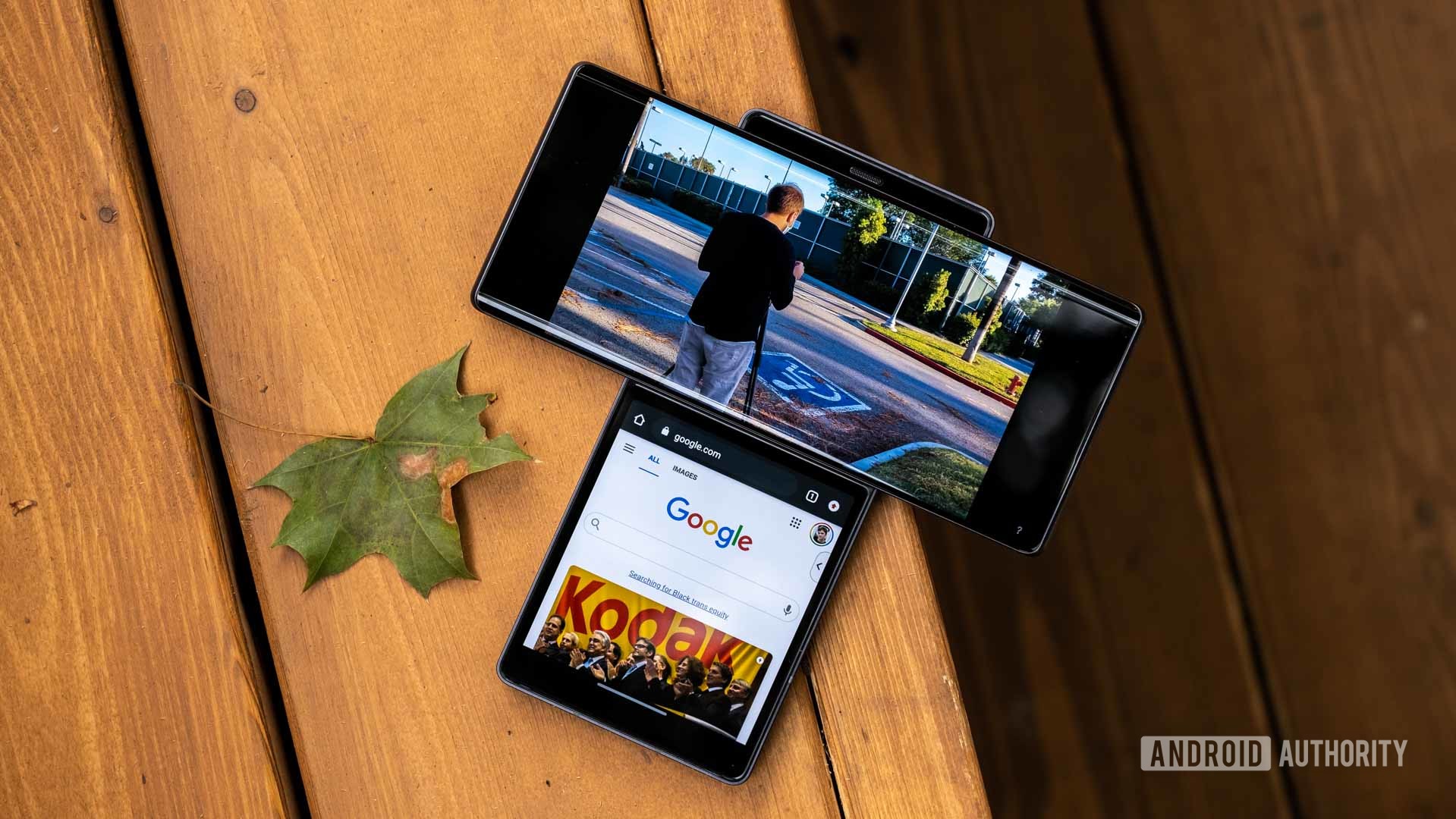
We first heard about the LG Wing in the first half of 2020, with murmurings that the firm was working on a whacky form factor. The idea of a phone with a smaller, second screen that pops out from the back sounded really outlandish, but it’s real and it’s been available for a while now.
What should you expect from this offbeat smartphone? And is it a one-trick pony or does it have much more to offer? Here’s what you should know about the LG Wing.
Editor’s note: This LG Wing buyer’s guide is current as of August 2021. We will regularly update it with new content.
LG Wing: At a glance
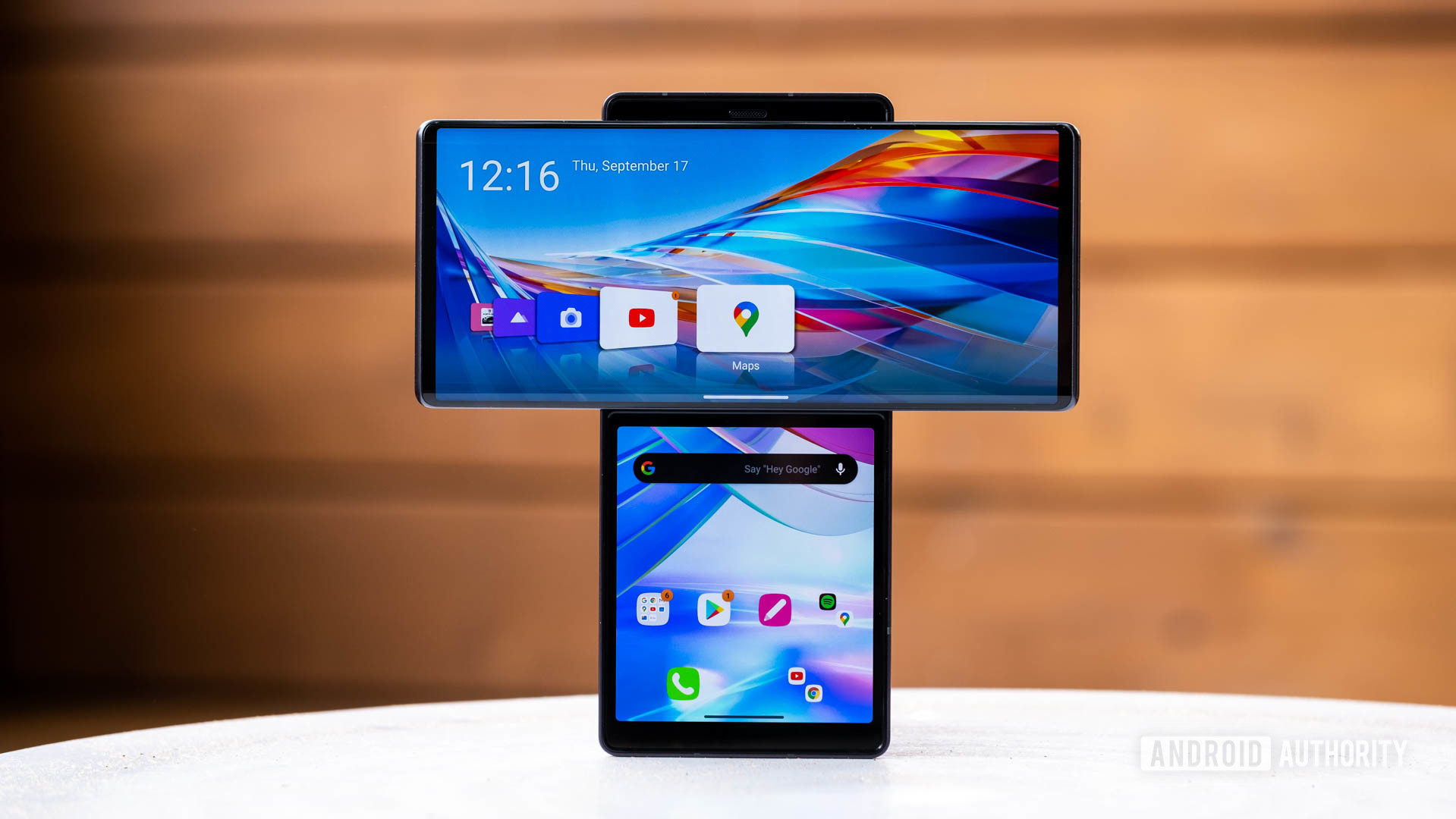
The LG Wing was the first phone in the manufacturer’s Explorer Project, promising innovative designs in the smartphone space. Unfortunately, LG’s decision to exit the smartphone business means it’ll be the only phone in the Explorer Project. Of course, the dominant LG Wing feature is the second screen that pops out from the back to sit at a perpendicular angle to the main screen. But another noteworthy design decision is a 32MP pop-up selfie camera, hidden at the top of the rear half.
Meanwhile, the LG Wing’s core specs are a Snapdragon 765G chipset with 5G connectivity (both mmWave and Sub-6), 8GB of RAM, 256GB of storage, and a 4,000mAh battery. The chipset, in particular, isn’t quite flagship-level, but LG is hoping that the camera experience is.
The Wing packs a rather interesting rear camera setup, featuring a 64MP main camera, 13MP ultra-wide shooter, and a 12MP “Ultra Wide Big Pixel” camera. LG says you also have a “Gimbal Motion Camera” feature which allows you to use the second screen as a grip and delivers a suite of capabilities to the 12MP camera.
Some of the touted photo/video capabilities in this regard include a “joystick” for controlling the camera angle, a lock mode to reduce blur and judder, follow functionality for smoother video when on the go, a pan follow mode for horizontal movement, and a “first-person view mode” for “rhythmic and dynamic” movements.
LG Wing: The second screen explained
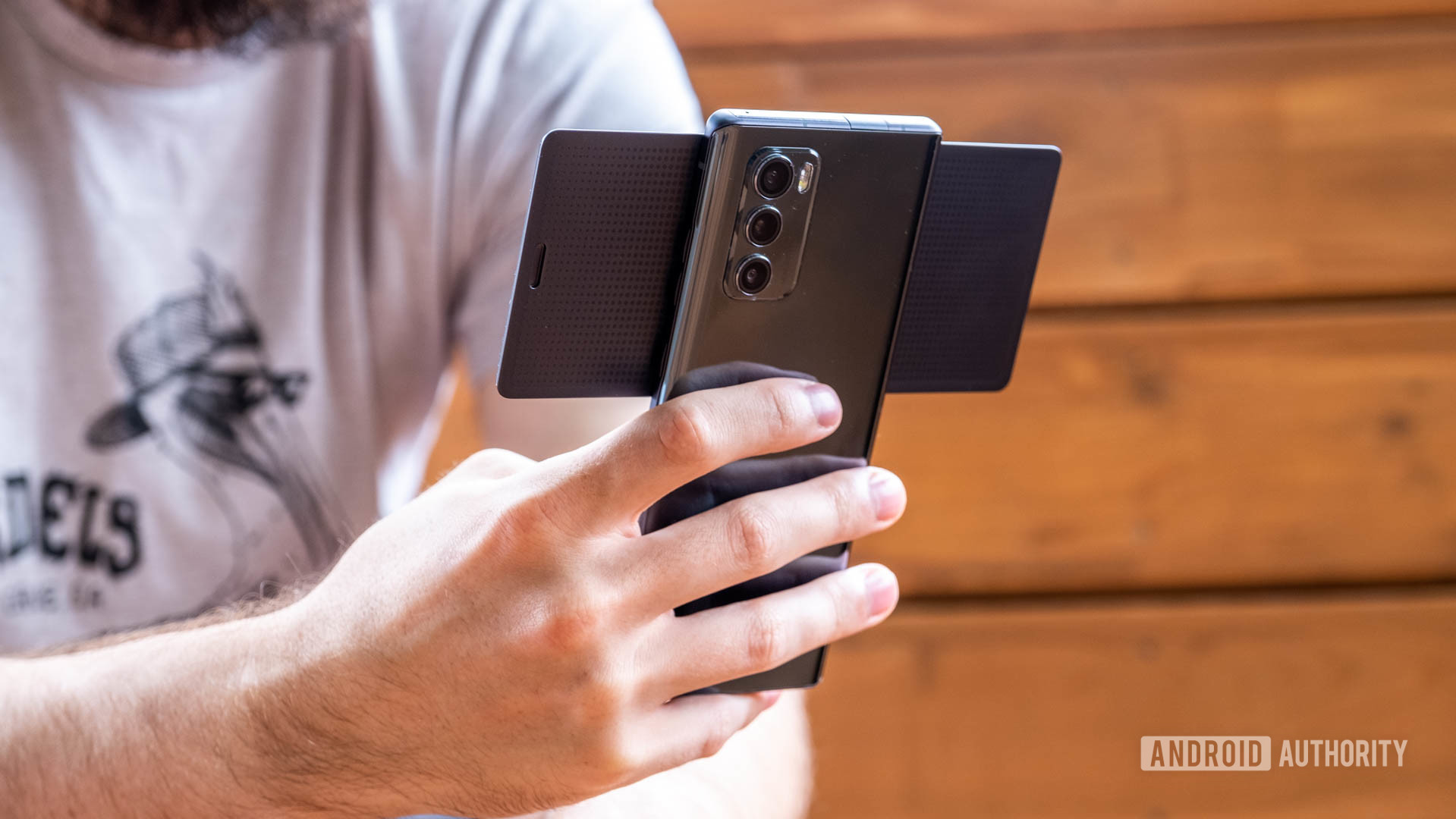
The phone can be used in a so-called Basic mode or in Swivel mode, with the former seeing the 3.9-inch second screen hidden away and operating as a normal phone. Pop out the screen for Swivel mode and you can use certain apps across both screens. You can also use two apps at once (one on each screen).
For example, you can use the main screen for GPS navigation, while the second screen can handle music. Or you can play a racing game on the main screen and see the game’s track layout on the smaller screen. Another example is the ability to watch a video on the main screen while texting on the second display, or watching a video on the big display and getting media controls on the small screen.
The secondary screen allows you to operate specialized apps running across both displays, or two different apps simultaneously.
The phone only supports certain apps optimized for Swivel mode, and we doubt we’ll see meaningful adoption over time given the firm’s decision to exit the mobile business. For what it’s worth, the LG Second Screen accessory hasn’t seen much adoption from developers anyway.
LG also offers a Multi-App feature that echoes a similar feature seen on the Galaxy Fold and Surface Duo lines. This allows you to create a shortcut to quickly launch a desired pair of apps. If you want to watch a local video while browsing the web, you could create a shortcut to open your video player and browser in one go.
LG has focused on durability too, saying that the hinge mechanism should last for 200,000 swivels. This is equivalent to just over 100 motions daily for five years, LG says. It’s also added a special material to the back of the main screen to protect the second screen from being scratched and to enable smoother pop-outs.
Is the LG Wing worth it?
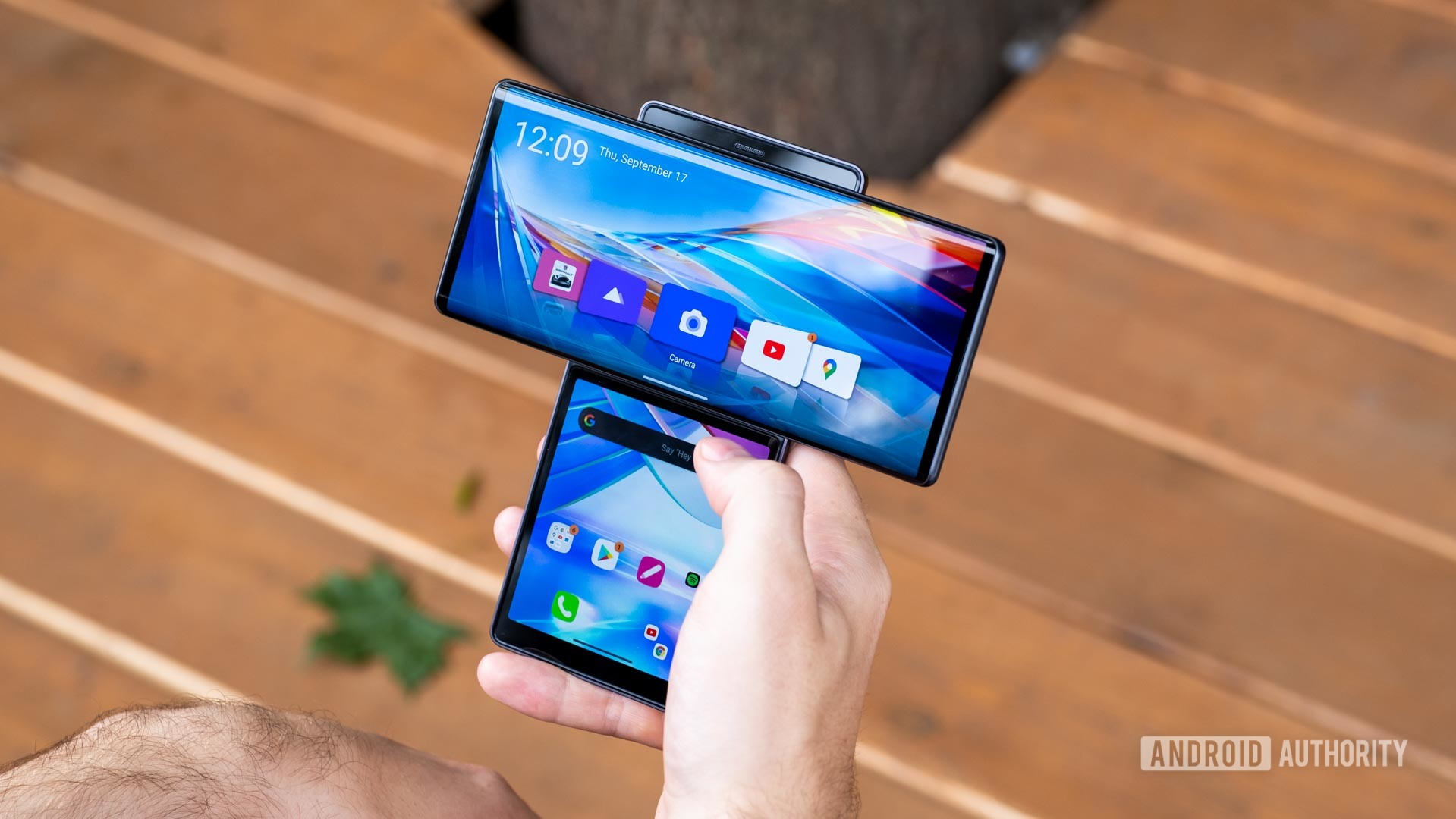
Experimental and innovative tech is always rough around the edges, and the LG Wing is no different. It’s a slick piece of tech, but it’s far from perfect. In Android Authority‘s LG Wing review, our own C. Scott Brown called it “An incredible first try, but a first try nonetheless.”
That doesn’t mean that the LG Wing isn’t worth it. Everything about the phone’s sliding mechanism (except for maybe software support) worked swimmingly throughout the review period. The real drawbacks were found in other parts of the hardware.
First off is the camera, which despite the neat gimbal mode simply can’t compete with other phones in its price range. Next is the size: it’s big and heavy. This shouldn’t be a surprise given that it has two screens, but it makes it awkward to use in normal circumstances.
Finally, the processor isn’t powerful enough. For $1,000 you’re essentially getting mid-range specs in the Snapdragon 765G chipset. Other two-screen or folding rivals all pack flagship processors, and it shows.
Ultimately this is a device for early adopters, which is fine. What’s really exciting is that LG is pushing the envelope with its devices, and doing something truly unique. It left us hopeful for the LG Wing 2, but that of course isn’t going to happen.
What experts are saying
It’s clear that the LG Wing is a unique proposition, but what did we think of it though? Our own C Scott Brown reviewed the smartphone and called it an “incredible” first try but still a first-generation product.
Scott felt the Wing’s form factor was the one he’d carry around in his pocket if he really wanted a dual-screen experience. However, he said the only use-case that intrigued him was the gimbal videography mode, criticizing the size, weight, and price of the phone otherwise. Nevertheless, Scott said a Wing device would be “mighty tempting” if LG could make it slimmer and lighter, give it flagship specs, and deliver more great use-cases.
Related: LG Wing review — An incredible first try but a first try nonetheless
As for general remarks, he praised the battery life, dual-screen software, and video recording features. On the other end of the spectrum, he lamented the mid-range processor and “mediocre” camera.
What other reviewers from around the web think
To give you a better idea of the critical reception to the Wing, here’s what a few other reviewers thought of the device:
- Julian Chokkuttu of Wired said he was “shocked” by how well the phone worked, from the actual swivel design to the software experience. He also praised the battery life, “decent” chipset, and stable video. It wasn’t all roses though, as he bemoaned the size and weight, the cameras, the built-in keyboard app, and lack of a 3.5mm port.
- PCMag‘s Sascha Segan called the Wing a “genuinely innovative” device, specifically heaping praise on multitasking, the gimbal video mode, and the “solid” cameras. Unfortunately, he felt that the phone was a letdown as far as weight, performance, and low-light focusing was concerned. He also felt that LG likely wouldn’t expand the ecosystem of apps that take advantage of the two screens.
- Ben Schoon over at 9to5Google said the LG Wing brought something new to the market, but stressed that people who consume content via their phone would likely appreciate the device more. He liked the gimbal camera mode, the actual swivel mechanism, and the ability to watch videos on the main screen while multitasking on the other. In saying so, Ben criticized the lack of a 3.5mm port, the unpolished Android skin, the pre-installed LG keyboard (which is the only keyboard app to recognize both screens), and the primary camera.
What people like you think of the LG Wing
The Wing’s launch price of $1,000 is pretty notable in light of the mid-range core specs otherwise. Of course, there’s more to the phone than just the processor and battery size, but it’s clear you’ll be spending a pretty penny on the device. Back at the launch, we asked readers how much cheaper the Wing would have to be for them to buy it. Here’s how they voted.
In other words, almost half of the readers said they’d buy the phone if it came in at $500. A quarter said they’d buy it at $700, and almost a third said they wouldn’t buy it if it were cheaper.
LG Wing specs
| LG Wing | |
|---|---|
Display | Main: 6.8-inch OLED 2,460 x 1,080 resolution 20.5:9 screen ratio 60Hz refresh rate Secondary: 3.9-inch OLED 1,240 x 1,080 resolution 1.15:1 screen ratio 60Hz refresh rate |
Processor | Qualcomm Snapdragon 765G |
GPU | Qualcomm Adreno 620 |
RAM | 8GB |
Storage | 128/256GB Expandable with microSD card (up to 2TB) |
Battery | 4,000mAh battery Quick Charge 4+ Wireless charging |
Cameras | Primary: 64MP sensor, ƒ/1.8 aperture, 0.8μm pixels OIS, 78-degree FoV Secondary: 13MP ultra-wide sensor, ƒ/1.9 aperture, 1.0μm pixels, 117-degree FoV Tertiary: 12MP ultra-wide sensor, ƒ/2.2 aperture, 1.4μm pixels, 120-degree FoV, Gimbal Motion Camera Front (pop-up): 32MP sensor, ƒ/1.9 aperture, 0.8μm pixels |
Connectivity | 5G (both mmWave and Sub-6) Wi-Fi 5 Bluetooth 5.1 NFC |
Durability | IP54 certified Protected from limited dust ingress Protected from water spray from any direction |
Operating System | Android 10 |
Audio | LG 3D Sound Engine No 3.5mm port |
Dimensions and weight | 169.5 x 74.5 x 10.9mm 260g |
Colors | Aurora Gray, Illusion Sky |
How good are the LG Wing cameras?
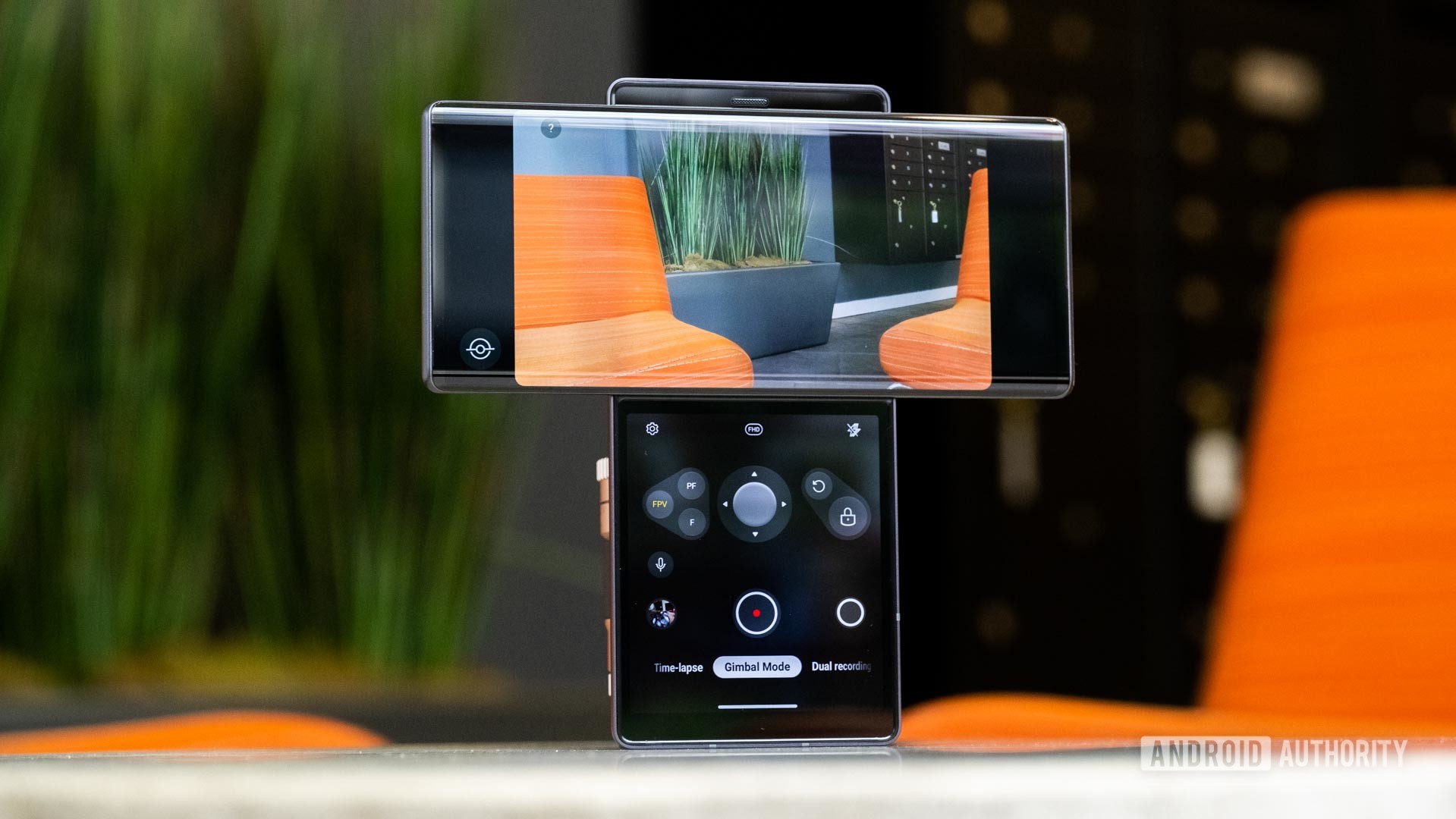
LG phones have generally been second-tier players when it comes to the cameras, delivering good photos and videos but not quite reaching the likes of Apple, Samsung, Google, and HUAWEI. This trend continued with the Wing, as Android Authority reviewer C Scott Brown said it was “so-so.” He specifically noted colors that could look a little washed out, and details that were “a bit mushy.”
In any event, Scott praised the results from the selfie camera and was pleasantly surprised by the Night View mode. He also heaped praise on the video side of things, saying the gimbal mode helped deliver “stunning” results. You can check out the photo/video samples and Scott’s full rundown in the Wing review.
What about battery life?
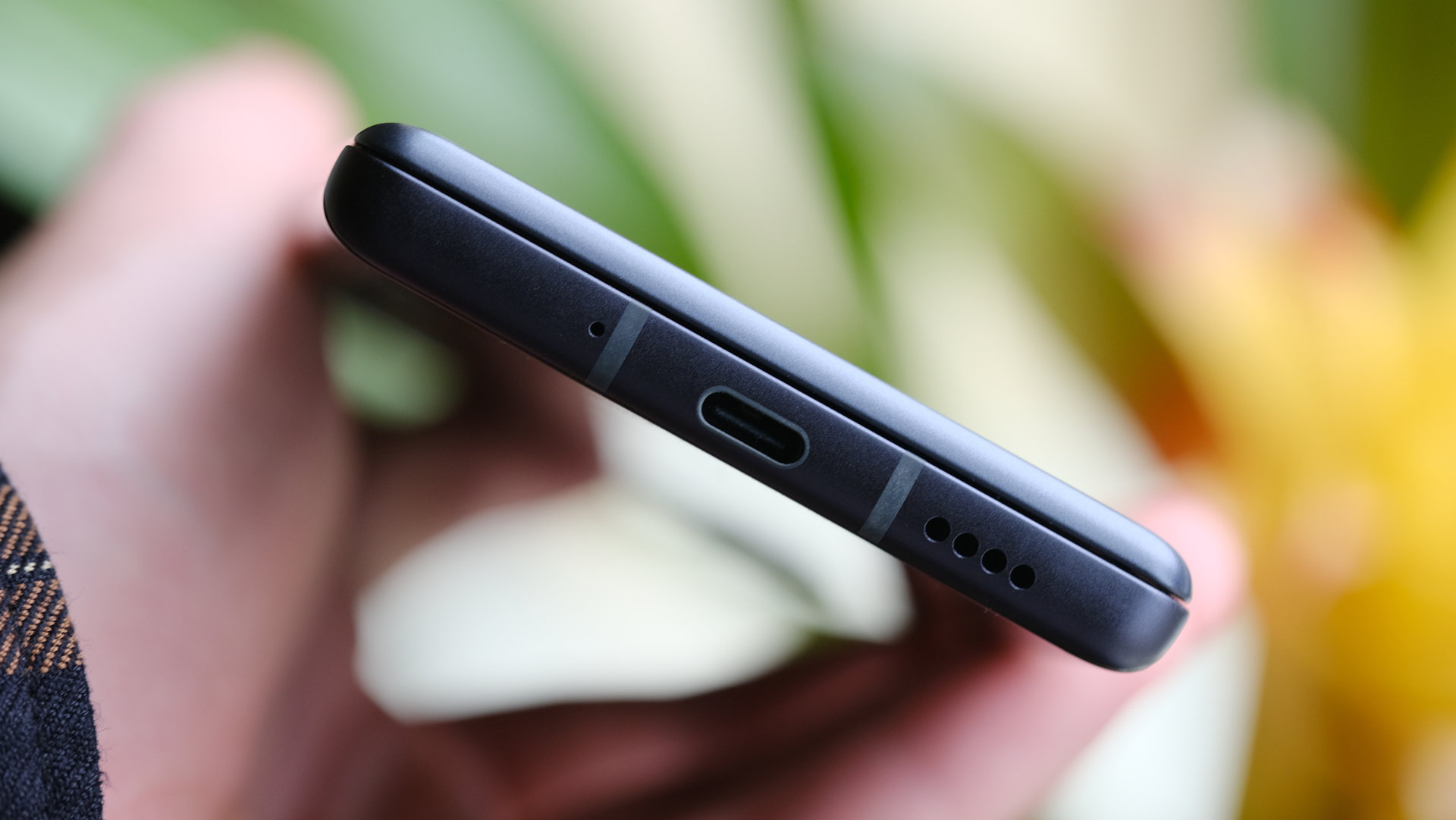
The LG Wing has a 4,000mAh battery which is a solid size, if not on the small side, for a 5G-enabled flagship smartphone. Scott felt that battery life was average, saying he got 5.5 hours of screen-on time with light-to-moderate usage. He adds that swivel mode uses a little more juice than expected.
LG’s swivel phone comes with a 25W charger in the box, going from empty to full in 75 minutes. It also packs 12W wireless charging, but no reverse wireless top-ups.
LG Wing performance
The smartphone comes equipped with a Snapdragon 765G SoC, which is a mid-range 5G processor. It’s also equipped with 8GB of RAM, along with 128GB or 256GB of expandable storage. So how does it actually fare in real-world usage?
Scott felt that the phone should’ve been equipped with beefier silicon, saying system animations were choppy and there was a bit of a wait to launch apps compared to even older flagship phones. Our reviewer added that he didn’t encounter any app crashes or massive slowdown during his time with the Wing.
LG Wing software
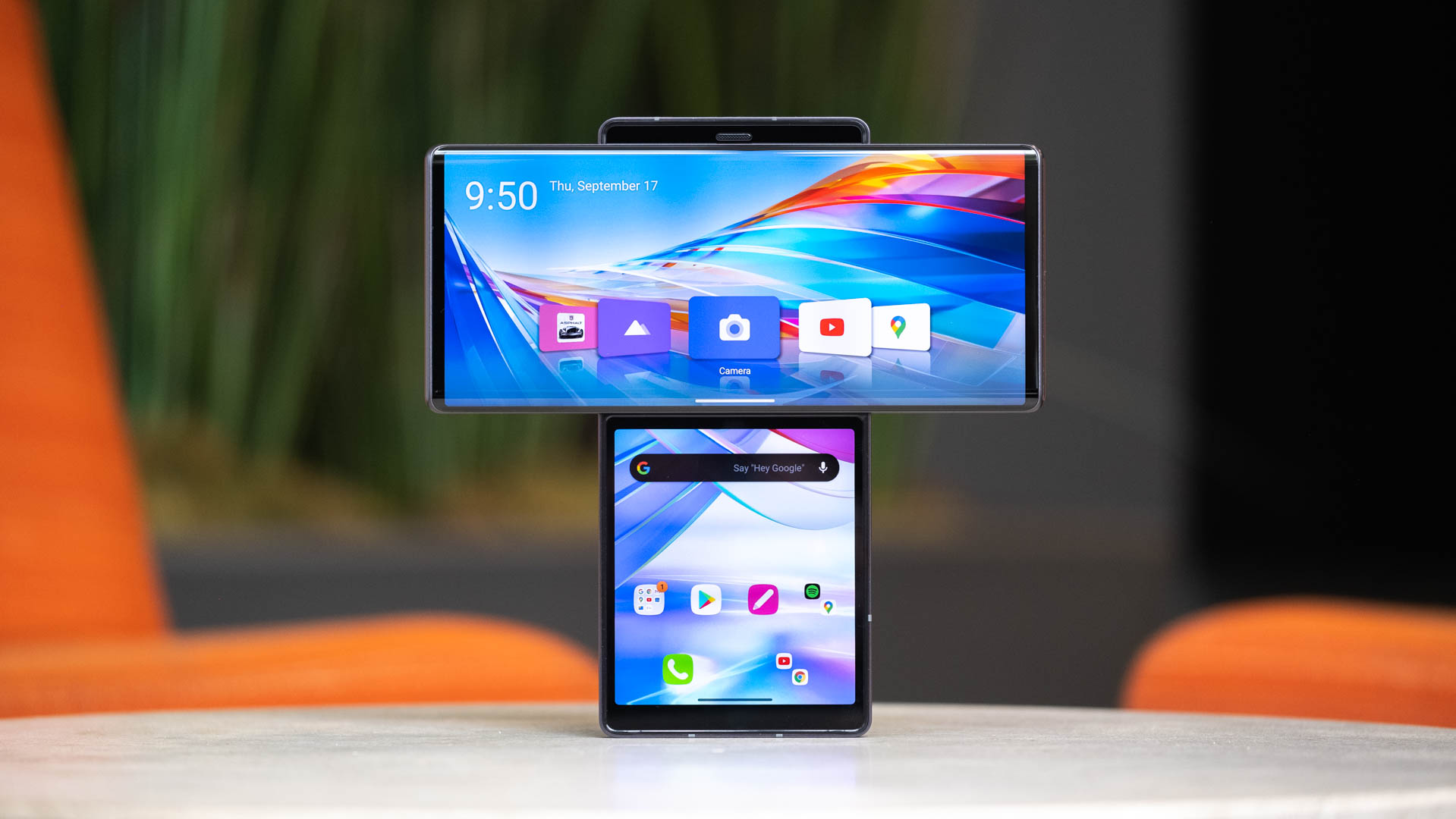
Expect to find LG UX 9.0 atop Android 10 when you take the Wing out of its box. LG’s skin delivers features like the neat context-awareness option (changing settings based on your location and connected accessories), and game tools. This is in addition to the Wing’s second-screen features.
Unfortunately, those hoping for Android 11 will need to keep waiting. An LG Germany roadmap suggests the update could only come to the Wing in Q4. Presumably, this applies to other locales too.
LG later confirmed that the Wing and other recent LG flagships will receive three years of Android version updates now that it’s exiting the phone business. More specifically, LG Korea says you can expect Android 12 and 13 on the device. So even with the division shutting up shop, this phone might be worth a look if you value software updates. But we’d still advise a wait-and-see approach.
LG Wing competition and alternatives
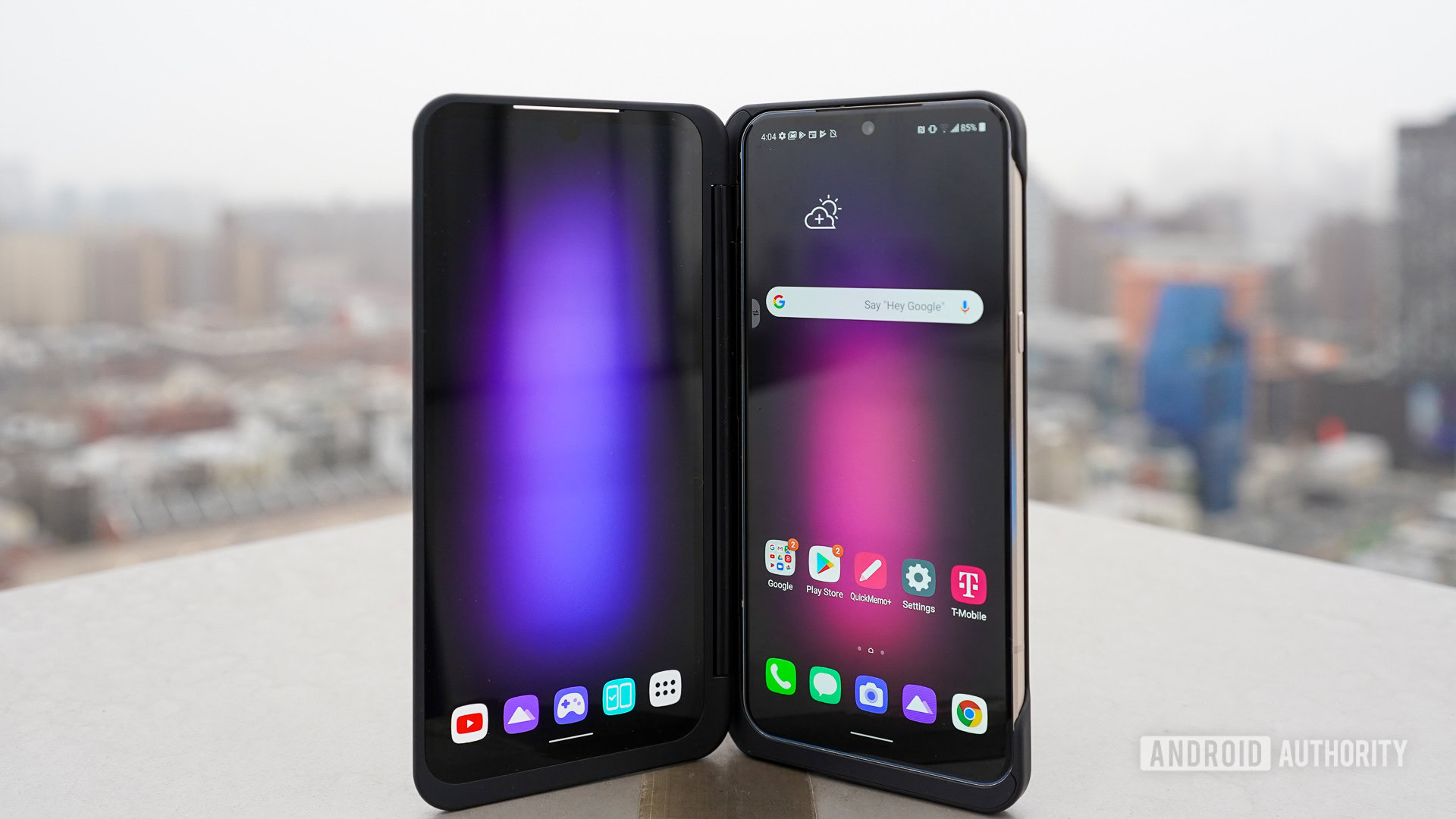
The LG Wing is unlike any other phone we’ve seen yet, so finding alternatives to it might be a tough endeavor.
In saying so, the Microsoft Surface Duo is similarly unique, while also offering two separate screens. The big difference here is that the Surface Duo offers two equally sized screens in a book-like arrangement, as opposed to the Wing’s big screen/little screen setup. Still, you’re also getting the ability to run an app on each screen or one app across both screens. You’re also getting the aforementioned app pair functionality to launch two specific apps at once. The Surface Duo’s $1,400 price tag, unpolished software, and anemic spec sheet (no 5G, NFC, wireless charging, or multiple cameras) might be major deal-breakers though.
Another potential LG Wing alternative is the Samsung Galaxy Z Fold 3. The new Samsung foldable delivers similar multitasking capabilities and two 120Hz screens, featuring a smartphone display on the outside and a tablet-sized folding screen on the inside. You’re also getting S Pen functionality, capable cameras, and IPX8 water resistance. This makes it a great device if you like the idea of a foldable rather than a swiveling phone, but it will set you back $1,799.
Last year’s LG V60 (seen above) could also be up your alley if you’re looking for a full-featured smartphone with an interesting trick up its sleeve. Like other recent LG flagships, the V60 has a Second Screen accessory that gives you a dual-screen foldable experience. This isn’t quite as polished and pocket-friendly as the Galaxy Z Fold 3, but you still have the ability to run an app on each screen or one across both displays. Best of all, it’s available for under $500 in the US now that a year has gone by and LG’s mobile unit is shutting down. That’s much cheaper than rival phones, while still offering features like a 3.5mm port and an IP68 rating.
Like the idea of the LG Wing’s gimbal camera functionality but don’t care for the second screen? Then the vivo X60 Pro series might be for you, with the X60 Pro available in Europe and India and the X60 Pro Plus flagship only available in India. Both offer micro-gimbal systems for improved video stability and low-light quality, but the X60 Pro offers it on the main camera while the Plus offers it on the ultra-wide shooter. The X60 Pro is available for a rather pricey £749 (~$1,065) in the UK and a more reasonable Rs 49,990 (~$690) in India. The Plus comes in at Rs 69,990 (~$965) in India.
Pricing and availability
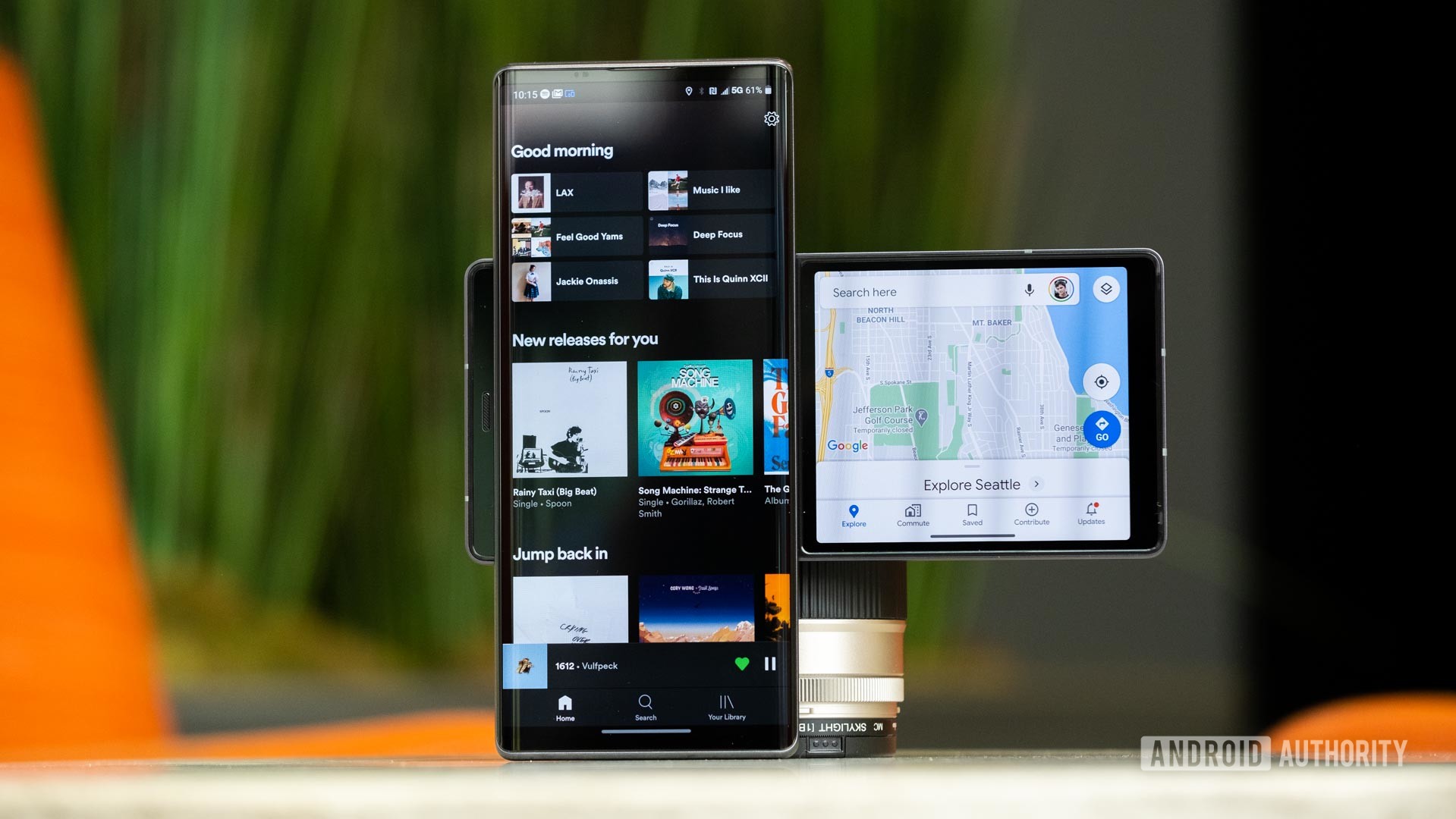
The LG Wing launched in a locked state from the three major wireless carriers in the United States. Unfortunately, there is still no way to buy the Wing outright in an unlocked format.
Verizon was selling the Wing for $999 but it seems to be out of stock as of writing. AT&T still listed the Wing as of August 2021, but it’s apparently out of stock too. It isn’t available via T-Mobile either, despite previously offering the device.
The phone also launched in India and was sold for Rs 34,990 (~$485) on Amazon at one point. That was over 50% off the original Rs 80,000 (~$1,100) price tag. Unfortunately, it seems like we’ve only got renewed options on the website right now.

Top LG Wing questions and answers
Q: Does the LG Wing have a 3.5mm port?
A: Unfortunately, the LG Wing lacks a 3.5mm port. This means it’s quite possibly the first LG flagship without the port. The firm also says that it lacks quad DAC audio hardware as a result.
Q: Does LG’s new phone support wireless charging?
A: Yes, the Wing packs support for wireless charging. In addition to wireless charging, the phone also supports the Quick Charge 4 Plus wired standard.
Q: Does the LG Wing support storage expansion?
A: The phone packs plenty of storage, but it also supports microSD expansion up to 2TB if you really need more space.
Q: How much internal storage is available on the phone?
A: The Wing packs 128GB or 256GB of internal storage.
Q: Does the gimbal feature work with all rear cameras?
A: No, this feature is only available on the 12MP “Ultra Wide Big Pixel” camera.
Q: Is the LG Wing water-resistant?
A: The Wing packs an IP54 rating, which means it’s splash-resistant. You don’t want to immerse it in water though, as it lacks the IP67 and IP68 ratings we see on water-resistant devices.
Q: What colorways are available for the LG Wing?
A: The phone is available in Aurora Gray and Illusion Sky.